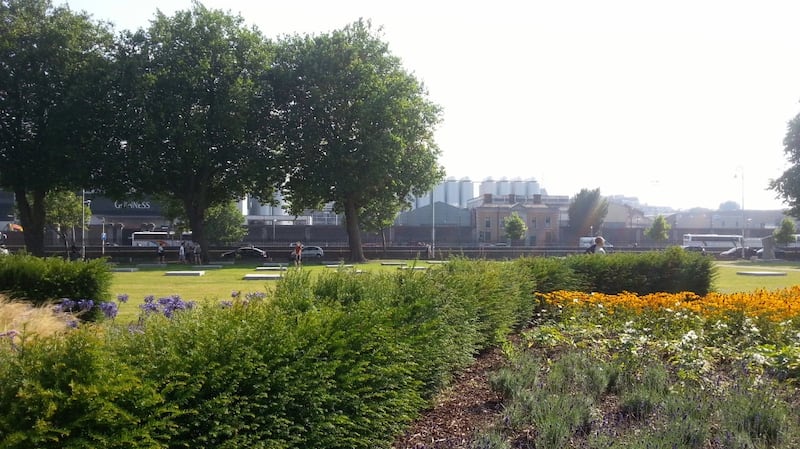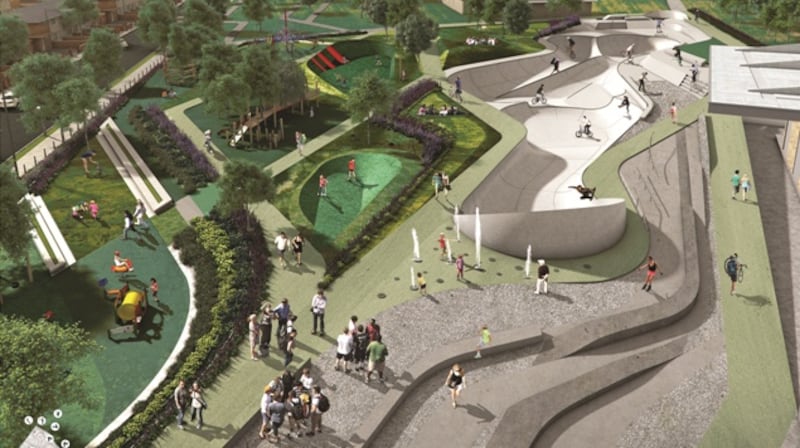A recent proposal by Dublin City Council and the National Transport Authority to remodel College Green as a pedestrian-priority civic plaza highlights two significant developments: one is that the council recognises the city's need for increased open space, while the other is that it is showing an interest in what the public thinks of its environs.
Public consultation in the form of an online survey and a major event in the Mansion House last November should feed into the design of recently appointed team Dixon/Jones and Paul Keogh Architects before it heads to An Bord Pleanála, with construction on the plaza expected to start in January 2018.
Meanwhile, a host of other projects, both big and small, are under way by the city’s parks department to create the breathing space the city needs. Chief Parks Superintendent Leslie Moore says “greening the city” is crucial.
0 of 3

“It’s about making the city a more liveable place, from aesthetic, biodiversity and environmental perspectives. Aesthetically it makes the city a more pleasant place to be and from a biodiversity point of view it encourages more wildlife into the city. Environmentally, there are multiple benefits of introducing greenery. For example, a lot of the greening we’re doing provides drainage which helps to eliminate the flashflooding that arises in a city with a lot of hard surfaces.”
Parks and green spaces also improve the availability of free recreational spaces in which to spend and share time. As individuals we benefit from this in many ways, and neighbourhoods with green space typically see a reduction in anti-social behaviour.
“There are anti-social problems in lots of parts of the city but redesigning spaces, making them more interesting and bringing more people into them tends to eliminate that.”

Eliminated anti-social behaviour
One such example is Croppies Acre, the park to the front of Collins Barracks. Work to the tune of €120,000 upgraded the park and opened it to the public in June of last year. “Now it’s a new public park in the city centre, one which is really popular and has eliminated a lot of anti-social behaviour.”
Planning has just been granted for the construction of a major new skate and BMX park in Ballyfermot, the design of which came after considerable public consultation and an international architectural competition won by London practice Relational Urbanism. The result is an ambitious park to cater for a wide range of people in the Ballyfermot area, and the project should be completed in early 2018.
"The cost of the play park is in the order of €1.3 million so it's going to be quite significant, probably the best in Ireland. We think it will be very successful and we hope that it will be a model for other skate parks in the future."

With planning acquired and archaeological work done, construction is now about to begin on another community-led project, this time in the Liberties. While the council identified through its Liberties Greening Strategy a dire need for green space in the historic city centre neighbourhood, the Cork Street community was campaigning for a park in the area.
One of those involved was skater Colin Farmer: “SkateD8 was set up by Sandy Hazel to campaign for a skate spot in Dublin 8. When Weaver Park on Cork Street was identified as the most suitable site, given the size of it we felt that it would have been rather selfish of us to suggest that the whole thing be a skate park. It made more sense for the campaign to morph into one for a park for the whole community.”
Rezone the site
They convinced the council to rezone the site – formerly the site of Chamber Street social housing – for use as a park and Áit Urbanism + Landscape were tasked with the job of designing a €750,000 park for a variety of uses and stakeholders, due to be completed by autumn this year.
“We started the design process for the park with a community workshop which was very well attended and very lively, so that gave us a really strong steer,” Daibhí MacDomhnall of Áit explains. “It made the process so much easier. If you design separate from the community the risk is when you present a design it doesn’t represent them, their aspirations or their vision for the space.”
Instead, the design for Weaver Park accommodates young and old, sitting and skateboarding, and integrates a number of features that echo the historic architecture and activity of the area, such as custom-designed play equipment that references the area’s Dutch Billy architecture, and a pergola whose timber frame will echo the nearby Tenters Field.
Crucially though, the park is rooted in skateboarding, as is only fitting given the origins of its creation. While only a small amount of the park is designed exclusively for skateboarding, much of the park’s features and surfaces are skateboarder friendly.
Colin is enthusiastic about this approach: “In more recent times when skateparks have been built they’ve been built solely for skateboarding so in some ways you lose a little bit of that creativity that was involved in appropriating urban space for skateboarding, in making the unskateable skateable. What Áit has designed is not a skatepark but a park you can skate in, giving skateboarding permission and bringing that creativity back in.”











